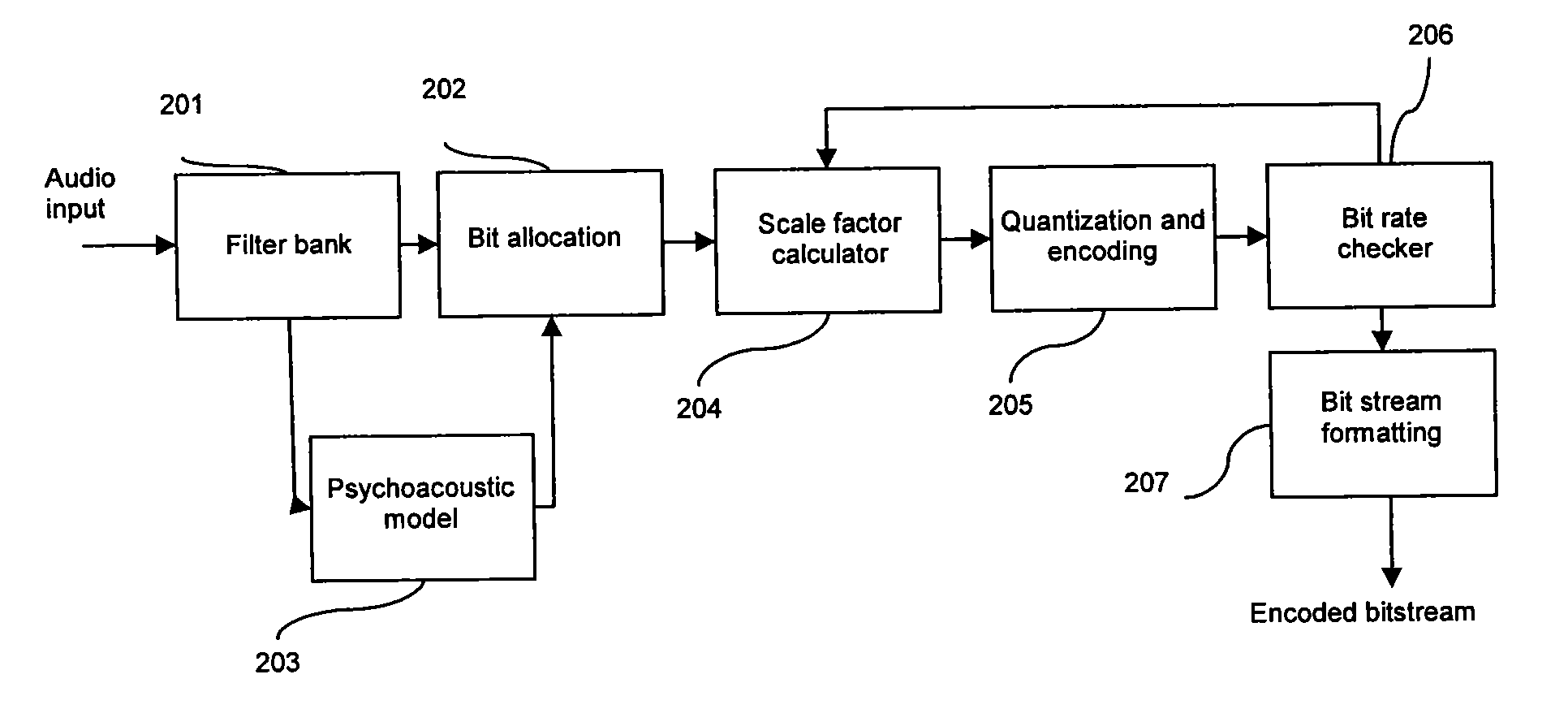Efficient method for reusing scale factors to improve the efficiency of an audio encoder
a scale factor and efficiency technology, applied in the field of audio signal processing, can solve the problems of high memory consumption during the process, unsuitable for mpeg 1 audio layer 3 (mp3), audible noise, etc., and achieve the effect of reducing computing power, reducing the processing required for quantization, and increasing the speed of the audio encoder
- Summary
- Abstract
- Description
- Claims
- Application Information
AI Technical Summary
Benefits of technology
Problems solved by technology
Method used
Image
Examples
Embodiment Construction
[0032]In an audio signal, the signal characteristics will change heavily over time only if the signal's amplitude and frequency increase within a very short time. For example, while processing a signal sampled at 44.1 KHz, an encoder has to process about 43 frames / sec. In such a case, the time difference between two consecutive frames is 0.02321 sec, which is a very short amount of time. Thus, a variation in signal characteristics cannot be perceived by a normal listener. So, the computation done in one frame can be safely used as a starting point for another frame, provided that the block type is the same. While processing the signal, the computation required to calculate the scale factors can be reduced significantly, as an audio signal does not change in its signal characteristics within a very short span of time.
[0033]FIG. 2 shows a block diagram of an audio encoder that utilizes a scale factor reuse method. An input audio signal is passed through a filter bank (201) that splits...
PUM
 Login to View More
Login to View More Abstract
Description
Claims
Application Information
 Login to View More
Login to View More - R&D
- Intellectual Property
- Life Sciences
- Materials
- Tech Scout
- Unparalleled Data Quality
- Higher Quality Content
- 60% Fewer Hallucinations
Browse by: Latest US Patents, China's latest patents, Technical Efficacy Thesaurus, Application Domain, Technology Topic, Popular Technical Reports.
© 2025 PatSnap. All rights reserved.Legal|Privacy policy|Modern Slavery Act Transparency Statement|Sitemap|About US| Contact US: help@patsnap.com



